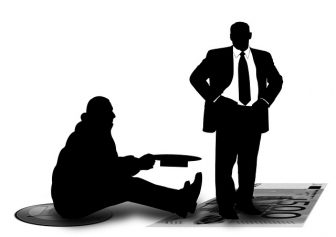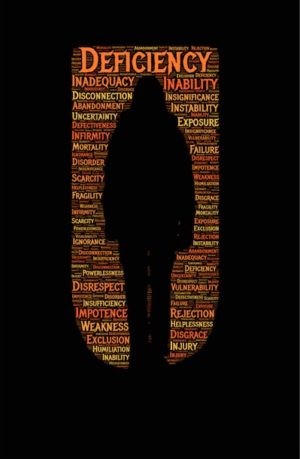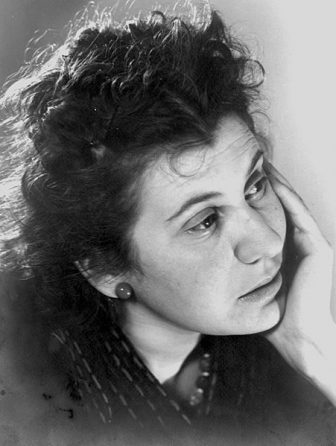 Over the course of the last several millennia, more and more power and wealth have been concentrating in the hands of fewer and fewer people. In a very literal sense, this currently deprives the vast majority of the world’s population of the capacity to truly shape our lives. Without enough access to resources, and torn as so many of us are from land and from gathering, hunting, or producing our own food, we have limited capacity to choose on the material plane. Even when we do have the external resources that allow us to choose, the range of options available to us is limited in very specific and deep ways. I don’t know of any path that would allow us to change the external and the social level of loss of power other than collective action. Individually, we cannot change those external circumstances. We have some limited capacity to change our location within this scheme, which partially explains the vicious competition that is a permanent feature of our lives, intensified with the deepening of capitalism’s rule of the planet. And even that limited capacity is only available to the few.
Over the course of the last several millennia, more and more power and wealth have been concentrating in the hands of fewer and fewer people. In a very literal sense, this currently deprives the vast majority of the world’s population of the capacity to truly shape our lives. Without enough access to resources, and torn as so many of us are from land and from gathering, hunting, or producing our own food, we have limited capacity to choose on the material plane. Even when we do have the external resources that allow us to choose, the range of options available to us is limited in very specific and deep ways. I don’t know of any path that would allow us to change the external and the social level of loss of power other than collective action. Individually, we cannot change those external circumstances. We have some limited capacity to change our location within this scheme, which partially explains the vicious competition that is a permanent feature of our lives, intensified with the deepening of capitalism’s rule of the planet. And even that limited capacity is only available to the few.
As if this wasn’t enough to create an experience of powerlessness, we also have two other layers of loss of power. One is our separation from each other and from community. Based on my reading over many years, I align with the perspective that maintains that our species evolved to be social, to function best in groups of about 100 people who are committed to the overall well-being of all within that group. Over the course of several thousand years, and in an accelerated and accelerating rate in the last few hundred years, more and more of us have been torn from community and left to fend for ourselves and our immediate families without the creativity and resilience that come from being part of a larger whole.
The second, and last loss is our internalized felt sense of powerlessness that comes from the way we have been socialized. Obedience and shame are such strong, normative elements in patriarchal societies, including in child-rearing, that virtually all of us have been shaped by them. The result is an experience of incapacity to be agents in our lives that is quite often even deeper and broader than the actual external limitations. Our lives often don’t feel like they are ours to run.
The Power of Story
In the midst of all this powerlessness and devastation, we have one power that absolutely no one can take away from us, even under extreme circumstances. This is the power to choose the story we tell ourselves, how we make sense of what is happening, both moment by moment as events unfold, and as we aim to look at life as a whole. From the moment we recognize that we have this power, life is simply never the same. It’s not an easy power to master, and, especially in the beginning, it can be fragile. Still, even when we lose it, we can’t fully forget that we know that freedom comes with this choice.
While indeed no one can take this power away from us, human life in most current societies is organized to make it inaccessible to us. Part of the deep tragedy of our life as humans in patriarchal societies is that the social order is sustained by stories inculcated into us through socialization and through the social mythologies that are spread within society. While I don’t believe that our thoughts shape external reality (as one available story suggests), I do fully believe that our thoughts shape what we do. I use the examples below to illustrate how certain stories that exist currently in the USA, keep us either passive or focused fully on individual solutions, both of which play directly into sustaining the capitalist, white-supremacist version of patriarchy that is endangering all life.
 Stories of passivity and inadequacy keep us from taking action altogether and preoccupied
Stories of passivity and inadequacy keep us from taking action altogether and preoccupied  with self-judgments, shame, and hiding from others instead of recognizing the nature of socialization and aiming to free ourselves from that legacy. Indeed, one of the ways that feminists in the US in the late 60s and 70s created change was precisely by bringing women together and supporting a widespread shift in the basic story: women began to see the societal origin of their misery instead of seeing themselves as the cause.
with self-judgments, shame, and hiding from others instead of recognizing the nature of socialization and aiming to free ourselves from that legacy. Indeed, one of the ways that feminists in the US in the late 60s and 70s created change was precisely by bringing women together and supporting a widespread shift in the basic story: women began to see the societal origin of their misery instead of seeing themselves as the cause.- Stories that make others less than human keep us focused on this or that group rather than on seeing through the social, cultural, and structural processes that keep us separate from each other and on moving toward reclaiming collaboration and collective action. A particularly horrendous and painful chapter in the history of the US is that the very story of Whiteness was introduced in response to European workers and enslaved Africans beginning to come together, recognizing the common source of their oppression. The threat of such joint actions and rebellions was large enough that it led the powerful group at the time to offer the story of Whiteness to the European workers, so they would identify upwards with those in power and sustain the social order rather than with the enslaved Africans to create change.
- Stories that paint all human beings as selfish and dangerous if not controlled keep us focused on survival for ourselves
 and our immediate family or group instead of recognizing scarcity as manufactured and aiming to restore the flow of life and resources. The entire project of capitalism is sustained by millions and millions of people being afraid of there not being enough and of others taking away what little they have. In addition, the massive war machine that all patriarchal societies resort to requires the manufacturing of narratives that make this or that group a threat to the social order, the nation, or the religion.
and our immediate family or group instead of recognizing scarcity as manufactured and aiming to restore the flow of life and resources. The entire project of capitalism is sustained by millions and millions of people being afraid of there not being enough and of others taking away what little they have. In addition, the massive war machine that all patriarchal societies resort to requires the manufacturing of narratives that make this or that group a threat to the social order, the nation, or the religion. - Because passivity is so toxic to the human soul, and because of pervasive cultural pressures, many of us find something appealing about stories that, instead of passivity, put all the responsibility on us. In the US context, for example, the motifs of self-sufficiency, independence, and picking ourselves up by our bootstraps run deep. These types of narratives, at the same time, downplay the degree to which we are in interdependent relationships with other people and impacted by their choices, along with the circumstances of our life, our social location, the place in the world where we are born, and a host of other such structural influences. While giving us a clear sense of agency, they also often keep us disconnected, in judgment of self when we can’t live up to what we believe we “should” be able to do, fearful of our own vulnerability, and blocked in our compassion for others. Such stories also sustain the status quo; they literally play into capitalism by leaving each of us to fend for ourselves, without the web of community that ancestors were often physically torn from to establish capitalism.
- Even aspects of the framework that I am proposing here – that we can choose the story we tell ourselves – can blur into a perspective that makes us fully responsible for everything that happens to us and keeps us away from connection or social critique. Sometimes the link is to our thoughts, to the point of suggesting, e.g., that if we are sick, it’s because we believe we deserve it. The focus on our thinking as the engine of change in the world is, once again, taking our attention inward, and giving us, sadly, ample opportunity to scold ourselves for not being positive enough, or bringing on ourselves this or that misfortune.
Aiming for Humility
As I see it, our social reality is complex and interwoven. This, too, is a story: the one I have chosen for myself. Like all stories, I don’t know it to be true. Even while writing this, in interactions surrounding the editing process, I realized how much I had semi-conscious thoughts that my story would be the only one that makes sense to embrace once we realize that we have choice. I am grateful, as always, for any opportunity to be humbled, because of how much inner openness, compassion, and calm come to me with humility.
Even without any guarantee of truth, my passion and longing for transformation, for coming back from the path of destruction I see us on, lead me to continually want to share my inner findings and invite others into them.
Here’s what I mean by complex and interwoven. In response to all versions of stories that fully place responsibility on us individually, I want to remember that we do not choose the circumstances of our lives, where or when or to whom we are born, our social location, or the way life unfolds on the larger scale. All of that is external to us. We also can’t change at will the structure of our brain, the trauma we have endured and the impacts of that, or the capacities of our physiology in all its manifestations. At the same time, in response to stories that paint us as victims of circumstances and put the responsibility elsewhere, beyond our sphere of influence, I want to remember that we are never fully determined, or change would never have happened to any social order. As I see it, again, we only become a true threat to the existing social order when we recognize our capacity to choose a story that makes action possible, especially in tandem with others. I am drawn, therefore, into consciously choosing frameworks that emphasize a dynamic interplay of freedom and interdependence: acknowledging the limits of our choice within the social and internal contexts in which we live, and recognizing at the same time the never absent possibility of full choice in interdependent relationships with others, regardless. These frameworks put at their center elements such as compassion, vulnerability, tenderness, or the sense of the tragic. When we tell ourselves these stories, we shift our experience. Instead of anger, fear, guilt, or shame, we will more likely experience longing, mourning, openheartedness, and curiosity. We become closer to our fellow humans, and less harsh with ourselves. Only by what we tell ourselves.
 If you doubt this power, I invite you to familiarize yourself with Etty Hillesum. Etty, a contemporary of Anne Frank, about ten years her senior, died in Auschwitz, and also kept a diary. I consider her one of the spiritual giants of all times, in part because her journey didn’t take place in a convent cell, though she expressed a longing for it, trusting that under such circumstances she “might perhaps find peace and clarity.” As she herself realized and spoke of: “that would be no great feat. It is right here, in this very place, in the here and the now, that I must find them.” The here and now of her life was under Nazi occupation in Amsterdam, then in a transitional camp, and eventually in Auschwitz. And, as the world was closing in on her, her inner world opened and expanded, to the point where she was able to hold full compassion for Gestapo officers even while they were harassing Jews, and to declare in one of her journal entries: “I want to be everywhere in the world where people are suffering. I don’t want to know this thing called safety.” Her inner journey, without any external capacity to change her circumstances (and even clear evidence that she declined, simply because of her commitment to community, other available options that would have improved her prospects for staying alive longer), led to her living a different story from the prescribed narrative, landing her with an exquisite capacity to see and feel beauty, to let her soul soar, and to embrace extraordinary acceptance and inner peace.
If you doubt this power, I invite you to familiarize yourself with Etty Hillesum. Etty, a contemporary of Anne Frank, about ten years her senior, died in Auschwitz, and also kept a diary. I consider her one of the spiritual giants of all times, in part because her journey didn’t take place in a convent cell, though she expressed a longing for it, trusting that under such circumstances she “might perhaps find peace and clarity.” As she herself realized and spoke of: “that would be no great feat. It is right here, in this very place, in the here and the now, that I must find them.” The here and now of her life was under Nazi occupation in Amsterdam, then in a transitional camp, and eventually in Auschwitz. And, as the world was closing in on her, her inner world opened and expanded, to the point where she was able to hold full compassion for Gestapo officers even while they were harassing Jews, and to declare in one of her journal entries: “I want to be everywhere in the world where people are suffering. I don’t want to know this thing called safety.” Her inner journey, without any external capacity to change her circumstances (and even clear evidence that she declined, simply because of her commitment to community, other available options that would have improved her prospects for staying alive longer), led to her living a different story from the prescribed narrative, landing her with an exquisite capacity to see and feel beauty, to let her soul soar, and to embrace extraordinary acceptance and inner peace.
In addition to the very freedom that knowing we can choose our story gives us, the choice about which story we then adopt often leads to more inner freedom. It doesn’t by itself change the external circumstances. Inner freedom doesn’t make oppression go away. It doesn’t shift the skewed distribution of resources in the world. It doesn’t stop climate change. It doesn’t make wars end. It does change our inner experience of life. In that, it restores our dignity. It also expands our imagination. At a certain point, having enough inner freedom ends up increasing our capacity to choose how we respond, inviting us to apply our power in our world instead of only internally.
The Power of Responding
While our inner story may well have external ramifications, it is purely internal, and we often have the capacity to withhold it from those around us. Choosing how we respond, however, is in a different league altogether, because as soon as we act, there is impact, and that impact may well lead to negative consequences for us. Thus, the risk of the second ultimate power is real. People are sometimes killed when they speak up. Friends may leave. Jobs may disappear. Still, the choice is ours. Only the range of options available, and the scope of potential consequences to us if someone doesn’t like our actions, are given. No one can actually make us do or not do anything; they can only threaten us with such consequences. No matter what, we are still the agents of choice in all such scenarios. Even if we cannot imagine someone who would be willing to take on certain risks that we are not, we still can fully gain the knowledge that the potential for such action remains forever, even if fully submerged.
Another aspect of the tragedy of human life within patriarchal societies is that, along with the range of options available to us, both the obstacles to recognizing our power of choice and the risks associated with it are not evenly distributed. With regards to the obstacles, often enough, the less external power we have, the more trauma we have endured in early and later life, making choice less accessible in tangible ways. It’s not accidental that people who have been exposed to more adverse childhood experiences (ACEs) have worse outcomes even in terms of health, let alone having satisfying lives. Trauma of this kind robs us of dignity, of choice, of connection to self and other, of faith. All are essential ingredients of being human, and all affect our capacity to live well. As the research is beginning to accumulate, it is becoming progressively more evident that ACEs are correlated with economic and social disadvantage. Overcoming the obstacles to choice is thus a much bigger task for people whose lives have already been so deeply impacted by such events. Without access to external resources, more depends on internal capacity, including for choice, even as choice is less available given the cumulative individual and collective trauma. And, to add to this, the risks are also more pronounced the less external power we have. In particular, taking any action that challenges the existing social order carries more consequences, for example, for children than for adults; for women than for men; for dark skinned people than for lighter skinned people; for people of persecuted or maligned religious or cultural backgrounds than those who are of the dominant group.
No one indeed can take away our power of choice about how to respond, and it’s entirely possible to make the consequences so beyond capacity that this deep truth becomes painfully abstract, almost meaningless. I still find that remembering the possibility in and of itself serves as an inner resource.
Nonviolence
Because I believe so deeply in the transformative potential of nonviolence, I want to use it as an example of how the story we choose shapes our actions. One simple way that nonviolence can be described is as choosing a particular story and, based on that story, choosing particular actions. Any time we see nonviolence only in terms of actions, we miss the deeper dimensions of it which arise from the kind of power that I point to in this piece. This is why Gandhi included thought, word, and deed in his understanding of nonviolence; not only deed. The range of options available to us increases as our internal story shifts. The examples are truly endless. Because in this piece I am talking only about the power of an individual, I am including here two stories about individuals.
In The Powers That Be Walter Wink recounts vividly the story of a woman, well-trained in nonviolence, who woke up in the middle of the night to find a man, a stranger to her, about to assault her. She managed to navigate the situation to zero harm, and the starting point of it was her recognition that her safety and the safety of that man were intertwined. This recognition is a shift in the story she tells herself, from what is available in the culture at large, which paints a picture of struggle for life between a predator and a victim. By finding her way out of that story into one that saw the humanity of the person who was about to assault her, she was able to choose entirely unexpected responses, designed, I believe, to get him out of the trance of seeing her as purely an object. She started with asking him what time it was, which indeed led to safety for both.
In my own life, as a young woman, I was tormented for years by the impossibility of engaging with the moments in which men were whistling or making other gestures at me on the streets of New York, where I was living at the time. The only options I could see within the story I was living in were to look away, which would compromise my own humanity, or to engage, which would make me prey to their scheme, so I thought. I hated both. One day, I became conscious of a different possible story. I understood them, suddenly, as doing the only thing they knew to do to get what they didn’t know how to ask for any other way: human contact, some connection. The moment I recognized that, it became clear that if I responded to what I would now call the underlying need, there would be no reason for them to persist in their actions. From that moment on, as I would approach the places where they tended to congregate, I greeted them from a distance, before they adopted the inner attitude that made such treatment of women possible or even likely. The result was stunning. They would smile back, say a few words of hello, and the tension never occurred.
When it comes to collective action, the same logic applies: nonviolent collective responses to conditions of oppression are made possible, first, through a change in the collective story: the story shifts from fear and inadequacy to the possibility of taking action and creating change; from a win/lose battle to seeing the ultimate goal as what Martin Luther King Jr. named “Beloved Community” – a vision of recreating the fabric of connection that is the foundation of our social existence. No humans are enemies in this story. Actions, systems, and worldviews would need to be transformed, and no human need be discarded along the way. The story supports the choices. The choices support possibility. The outcome is always unknown.
Image Credits: First: Image by Gerd Altmann from Pixabay. Second: Image by John Hain from Pixabay. Third: Image by meaningful art from Flickr. Fourth: Image by anonymous, in the Public Domain
